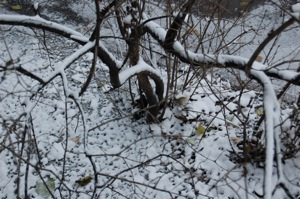COLD AND SNOW

People in California are often not prepared to deal with problems related to prolonged exposure to the elements. If you are planning on hiking or backpacking in an area where there is snow or where it is cold, it is very important to be properly prepared for what you may be dealing with, such as frostbite, sunburn or hypothermia. Improper preparation for the cold or snow can lead to loss of limbs, blindness or death.
General Tips for Hiking in the Cold and Snow
Hydration and nutritional needs are very different in the cold. The body burns more calories to stay warm and needs to hydrate more frequently to metabolize nutrients effectively.
- Layer your clothes and make constant adjustments to maintain a consistent, comfortable temperature. It is important to keep your body temperature balanced, not too hot or too cold, because if you overheat and get sweaty it can lead to rapid chilling. To cut the wind chill factor you will need, a wind-resistant outer shell.
- Keep your water supply from freezing. Try as starting the hike with heated water, storing it inside your pack and using an insulated hydration hose.
- Hiking in snow is similar to hiking in deep sand; you will need to exert more to accomplish the same goals.
- Avoid eating snow as a source of water. The body has to expend a great deal of energy to warm even a small amount of snow/water.
- If you need water, melt and warm the snow before drinking.
Preventing Sunburn
The reflection of the sun on the snow poses a greater risk for sunburn.
- Wear sunscreen with a high SPF (such as a zinc oxide)
- Wear good sunglasses to prevent burning your eyeballs with “snow blindness” (see below)
- Wear Lip balm to protect exposed skin from chafing due to wind and cold
- A hat will not protect much against sunburn, because UV rays are reflecting up off the ground.
 Snow Blindness
Snow Blindness
Snow blindness is, in essence, sunburn of the eye tissues.
Snow blindness is dangerous and can result in permanent blindness. The cause is increased exposure to ultraviolet rays reflected from snow, sea, or even sand. High altitude contributes due to a 4% increase in UV intensity for every thousand feet of elevation above sea level.
To Prevent Snow Blindness
Wear sunglasses! Purchase sunglasses that absorb nearly all UV rays large lenses and a design that covers the side of the eyes.
Symptoms of Snow Blindness
Like sunburned skin, symptoms aren’t evident immediately and it can take several hours for injury to manifest.
- Eyes may become bloodshot and tear
- Pain and a gritty sensation may develop
- Eyes may even swell shut.
No comments:
Post a Comment